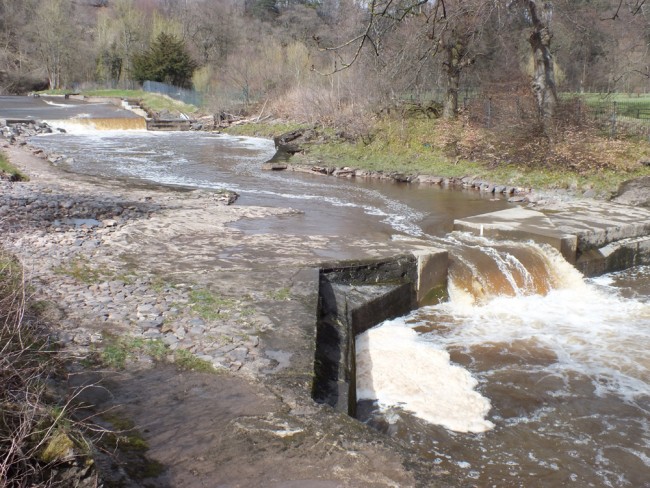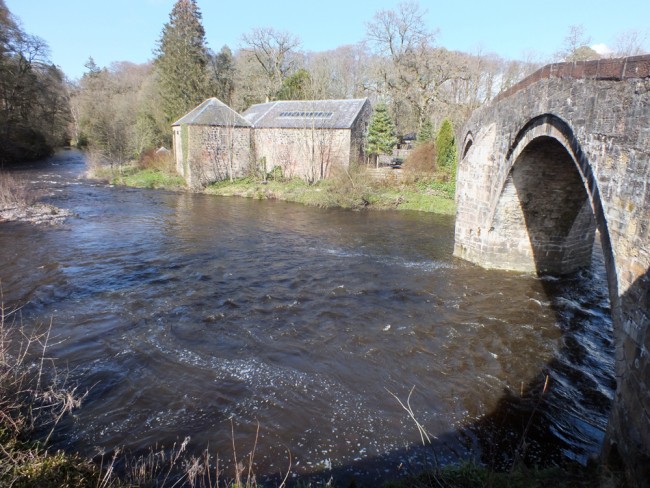Instead of heading further south as I’d planned today, I noticed the river Ayr was very dirty this morning and decided to investigate this instead. The Ayr has many problems leading to poor juvenile production and a decline in fish stocks, not least reduced water quality arising from diffuse pollution. Todays spate was dirty, very dirty but it didn’t appear to carry to heavy a sediment load and it was a horrible yellow ocherish colour. Most spates on the Ayr seem to carry a quantity of reddish clay synonymous with the soil found around Mauchline and Sorn in the middle to upper catchment. I took photos at Catrine and upstream.
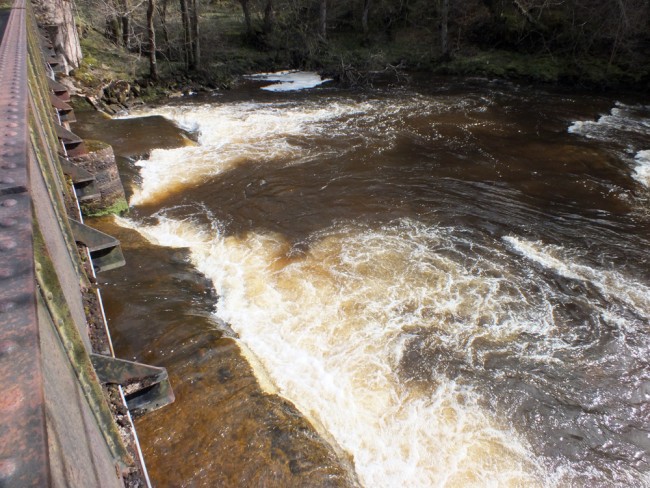
Glen Logan bridge upstream of Sorn where the water was less turbid than further downstream at Sorn and much clearer than at Catrine
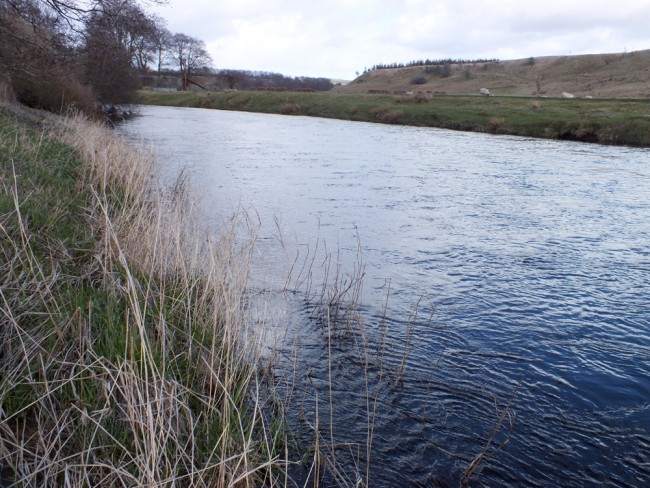
Limmerhaugh another few miles upstream and the river was clear of any obvious silt. It was slightly coloured but that’s to be expected in a rising water supplied from peaty soils.
I headed back to Catrine and walked from Daldorch upstream. On reaching the bottom end of Sorn estate water, the burn that enters on the left bank under the footbridge was dirty. I’ve seen this before but never had the time to walk through the jungle to trace it further upstream. I pushed on with the dogs in tow (or perhaps they towed me) to find several very small dirty tributaries contributing to the problem. These tributaries are fed from field drains that discharge at the edge of the wood. Presumably they carry a high nutrient load that causes the greyish colour. This nutrient would be better feeding crops than running down the drains and careful application to avoid over dosing, wet weather and appropriate to the growing season is required to reduce this type of damaging input.
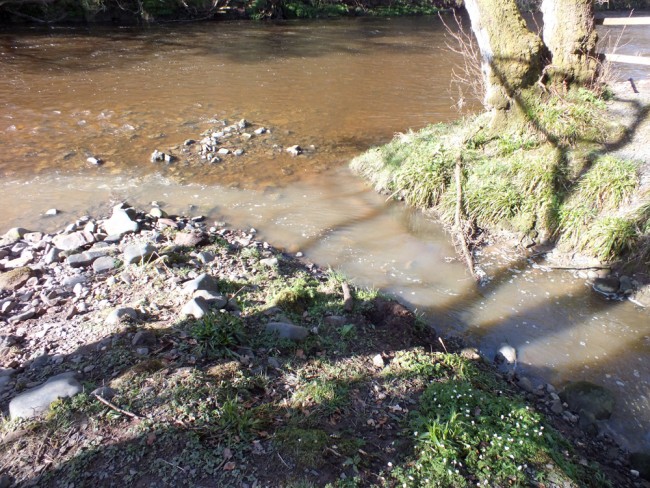
Un named burn that comes from Foulksyke Wood and beyond. It was obviously not the only source as can be seen from the photo but all these small inputs add up.
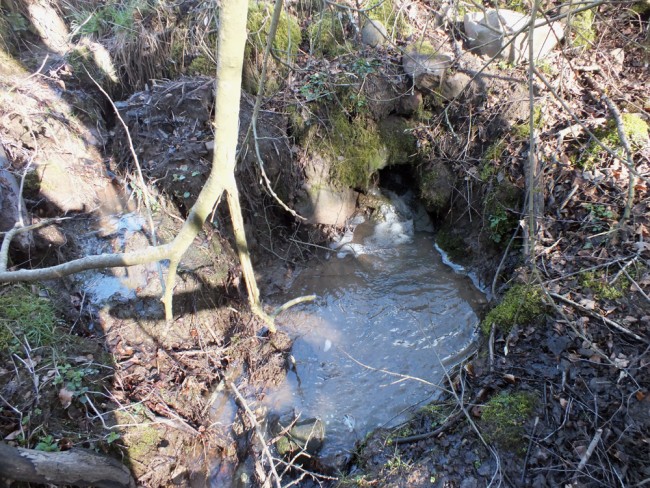
A field drain discharging to a ditch and then the burn. Dirty water issuing from drains, presumably carrying a high nutrient load are a huge part of the problem and the only way this can be addressed is by carefully avoiding over application of organic fertilisers and ensuring that the timing is appropriate with regard to both weather and growing season. Fertiliser is too valuable (and damaging) to pour down the drains.
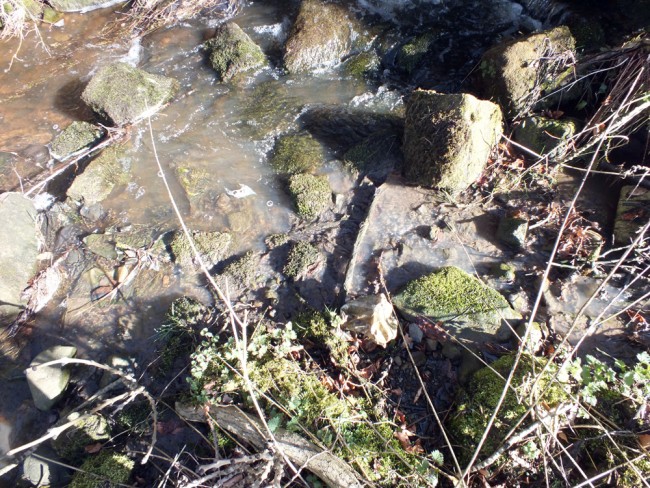
As I came to the road, I noticed this septic tank discharge. It’s not perfect but I’ve seen worse. It may benefit from the tank being emptied.
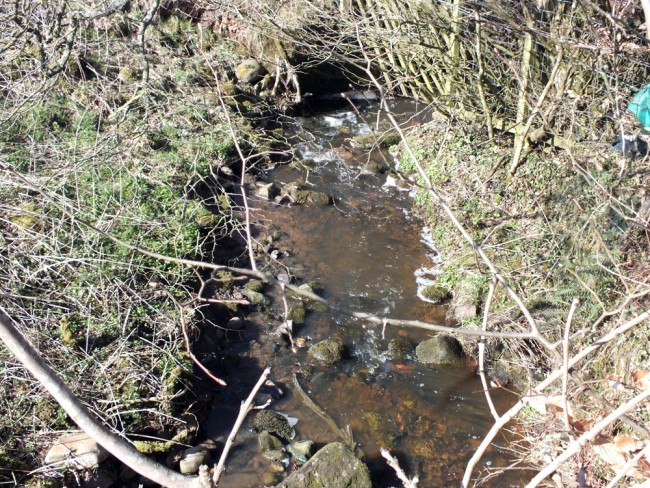
This photo was taken at the top of the wood from the road, just 50m upstream of the drain image. Water quality was improved but not perfect. The septic tank discharge enters in the bottom left of the image.
Unfortunately I didn’t get time to look at the Cleugh Burn after this walk but it too may have contributed to the enrichment I saw at Catrine. I will discuss the drainage issues with SEPA tomorrow and mention the septic discharge. Hopefully they will be able to address these issues effectively.
